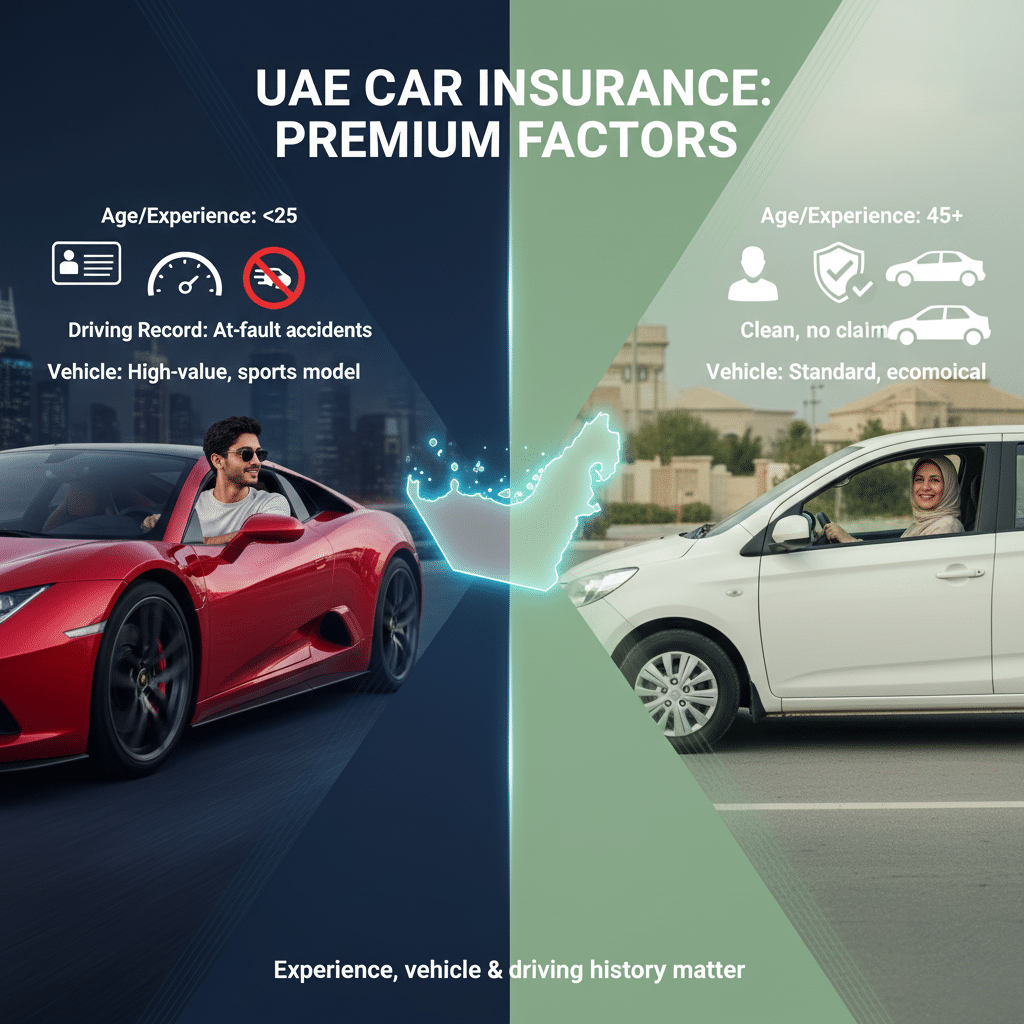That heart-stopping moment when your insurance renewal notice lands in your inbox. The number is bigger—sometimes much bigger—than last year, and that familiar feeling sinks in: you’re probably overpaying. For many of us, navigating the world of UAE insurance feels like a game where the rules are unclear, and the house always wins. High insurance costs can put a real strain on your budget, leaving you frustrated and searching for answers.
But what if you had the inside track? What if you had a playbook that put you back in control, transforming you from a price-taker into a savvy shopper? This is that playbook. Forget confusing jargon and vague advice. We’re about to reveal the actionable strategies, overlooked discounts, and a clear, step-by-step process for finding the absolute best value for your money. It’s time to stop overpaying and start saving thousands.
First, Why Are You Paying So Much for Insurance in the UAE?
Before we dive into the savings, it helps to understand what’s driving the cost. Insurance providers in the UAE don’t just pick a number out of thin air; they use a complex risk assessment to calculate your premium. Demystifying these factors is the first step toward influencing them. The general framework for insurance in the country is designed to be fair, but your personal details play the biggest role.
Here are the primary factors that determine your insurance quote:
- Your Age and Driving Experience: Younger, less experienced drivers are statistically more likely to be in an accident, which means they often face higher premiums.
- Your Driving History: A clean record with no accidents or traffic violations is your best asset. Insurers reward safe drivers.
- The Vehicle You Drive: The make, model, and age of your car are crucial. A high-performance luxury car will cost significantly more to insure than a standard sedan because its repair and replacement costs are much higher.
- Your Location in the UAE: Premiums can vary slightly depending on the emirate you live in, with factors like traffic density and accident rates playing a part.
- Your Intended Use of the Vehicle: How you use your car—whether for a daily commute, business, or leisure—affects the perceived risk and, therefore, the price.
Understanding these elements helps you see where you have control. While you can’t change your age, you can certainly control your driving habits and, when the time comes, your choice of vehicle. For a foundational overview of insurance in the country, the UAE Government Insurance Guide is an excellent official resource.

Core Strategies to Immediately Reduce Your Insurance Premium
Now for the actionable part. These are the core strategies you can use to start chipping away at high insurance costs. We’ll go beyond the basic tips to give you the expert angle needed to maximize your savings.
Master the No-Claims Discount: Your Loyalty Reward
This is arguably the single most powerful tool for saving money on car insurance in the UAE, yet many people don’t fully understand how to leverage it. The No-Claims Discount (NCD), or No-Claims Bonus, is a significant discount that insurers give you for every consecutive year you go without making a claim.
It’s a standard, regulated practice in the UAE, and it’s your reward for being a safe driver. The longer you drive without an accident, the bigger your discount becomes. For example, after just one claim-free year, you might get a 10% discount. After five or more claim-free years, you could see substantial discounts of up to 20-30% on your premium.
Pro Tip: Your NCD is portable! If you switch insurance providers, don’t forget to request a No-Claims Certificate from your old insurer. You can present this to your new provider to retain your hard-earned discount.
Adjust Your Deductible (or ‘Excess’) Wisely
The deductible, often called ‘excess’ in the UAE, is the amount you agree to pay out-of-pocket for a claim before your insurance coverage kicks in. There’s a simple, direct relationship here: if you agree to a higher deductible, your insurer will offer you a lower premium.
However, this isn’t a free lunch. Choosing a higher deductible is a personal financial decision that requires careful thought. Ask yourself: could I comfortably afford to pay this higher amount tomorrow if I had an accident? If the answer is no, a lower deductible might be safer, even if the premium is slightly higher. It’s about balancing immediate savings with your financial security. Always check your policy’s terms and conditions to fully understand your obligations, a key aspect of consumer rights. The DFSA Guide to Insurance offers great insights into understanding policy terms.
Bundle Your Policies for a Multi-Policy Discount
If you have other insurance needs—like home or health insurance—you may be able to unlock a discount by bundling them with your car insurance from the same provider. Insurers love loyal customers and often reward them for bringing more business their way.
Pro Tip: While bundling is often a great way to save, don’t assume it’s automatically the cheapest option. Always get separate quotes for each policy from different providers as well. Sometimes, two separate policies from competitive insurers can still be cheaper than a bundled deal. Do the math to see what truly offers the best value. This nuanced approach shows genuine expertise and puts your financial interests first.
Pay Annually to Avoid Extra Fees
This is one of the simplest insider tricks that many people overlook. While paying your premium in monthly installments can feel lighter on your wallet, it often comes with hidden administrative or financing fees. These small charges add up, meaning you pay more over the course of the year. If your budget allows, paying your entire premium in one annual lump sum will almost always save you money.

The Ultimate Playbook: How to Compare Insurance Quotes Like a Pro
Generic advice like “shop around” is useless without a process. This is the playbook that will turn you into an expert comparison shopper, ensuring you find the best possible deal. The insurance market is regulated by the Central Bank of the UAE (CBUAE) to ensure fair practices, and knowing your rights is part of the process.
Step 1: Gather Your Essential Documents
To get accurate quotes quickly, have your documents ready. This simple preparation step saves a huge amount of time and frustration. You will need:
- A copy of your Emirates ID (front and back)
- A copy of your UAE Driving License (front and back)
- A copy of your Car Registration Card (Mulkiya)
Step 2: Use a Mix of Direct Insurers and Comparison Websites
Don’t put all your eggs in one basket. The best strategy is a hybrid approach.
- Comparison Websites: Platforms like YallaCompare or Policybazaar.ae are excellent for getting a broad overview of the market quickly. They allow you to enter your details once and receive multiple quotes in minutes.
- Direct Insurers: Some insurance companies don’t list themselves on comparison sites or may offer special direct-only deals. It’s always worth getting a quote from one or two major, reputable insurers directly through their website or by calling them.
By using both methods, you ensure you’re seeing the widest possible range of options.
Step 3: Compare Apples-to-Apples (Beyond Just the Price)
This is the most critical step and where most people go wrong. The cheapest quote is not always the best one. A low price could hide a high deductible, poor coverage, or restrictive terms. To truly compare policies, look at these key details side-by-side:
- The Premium: The final price you pay.
- The Deductible/Excess: The amount you pay per claim.
- Coverage Type: Is it comprehensive or third-party only?
- Repair Clause: Does the policy specify “agency repair” (repairs at the official dealer) or “garage repair”? Agency repair is preferable, especially for newer cars, but often costs more.
- Included Add-ons: Does the policy include benefits like roadside assistance, rental car coverage, or off-road cover?
- Coverage Limits: Check the limits for property damage and personal injury to ensure they are adequate.
Creating a simple spreadsheet with these columns for each quote is the ultimate pro move to see which policy truly offers the best value for its price.
Step 4: Read Reviews and Check the Insurer’s Reputation
A fantastic price from an insurer with a terrible reputation for customer service or paying claims is a disaster waiting to happen. Before you commit, do a quick search for recent reviews of the company. How easy is it to file a claim? Are customers generally happy with the service? A policy is only as good as the company that backs it. Knowing your rights under the CBUAE Consumer Protection Framework can empower you when dealing with providers.

Take Control of Your Insurance Costs
You are now equipped with the ultimate playbook for saving money on insurance in the UAE. The key takeaways are simple but powerful: understand the factors that shape your premium, actively leverage key discounts like the No-Claims Bonus, and most importantly, follow a structured, detail-oriented process to compare quotes. By moving beyond just the price and analyzing the true value of a policy, you can ensure you are never overpaying again.
Ready to put this into practice? Use the steps and comparison points in this guide as your personal “Annual Insurance Review Checklist.” Every year, before you renew, run through this playbook. It’s your ticket to taking control of your insurance costs and keeping thousands of dirhams in your pocket where they belong.
This article provides general information and tips and does not constitute financial advice. Consult with a qualified insurance professional for personalized guidance on your specific situation.
Official Resources & References
- The Official Portal of the UAE Government. (n.d.). Insurance. Retrieved from https://u.ae/en/information-and-services/finance-and-investment/insurance
- Dubai Financial Services Authority. (n.d.). Protecting yourself – Insurance. Retrieved from https://www.dfsa.ae
- Central Bank of the UAE. (n.d.). Consumer Protection. Retrieved from https://www.centralbank.ae/en/consumer-protection/



